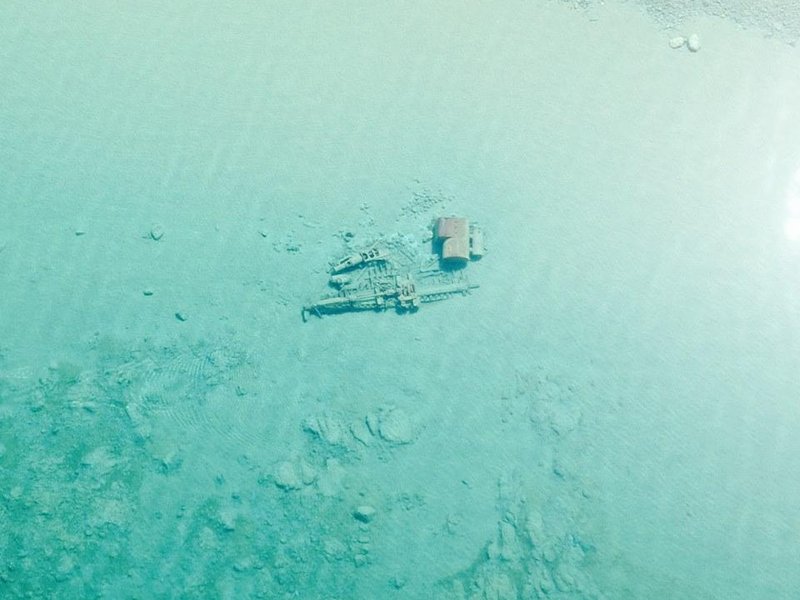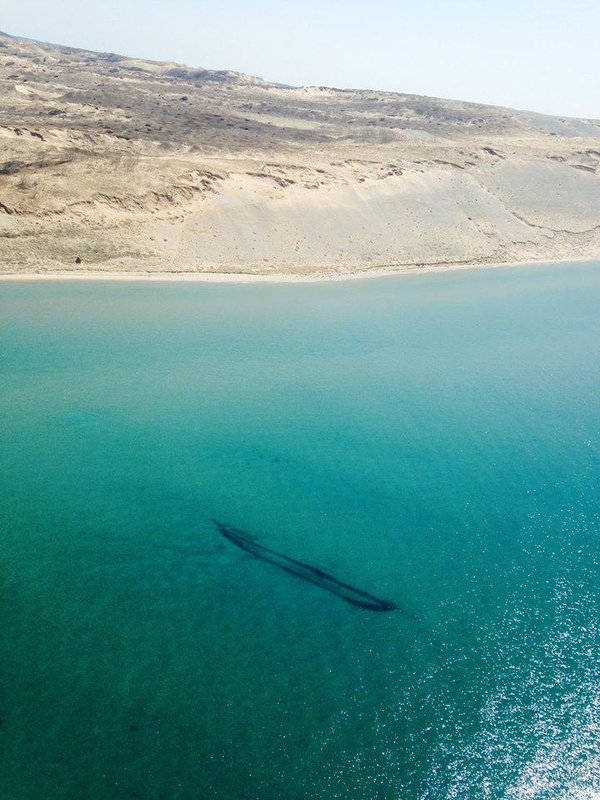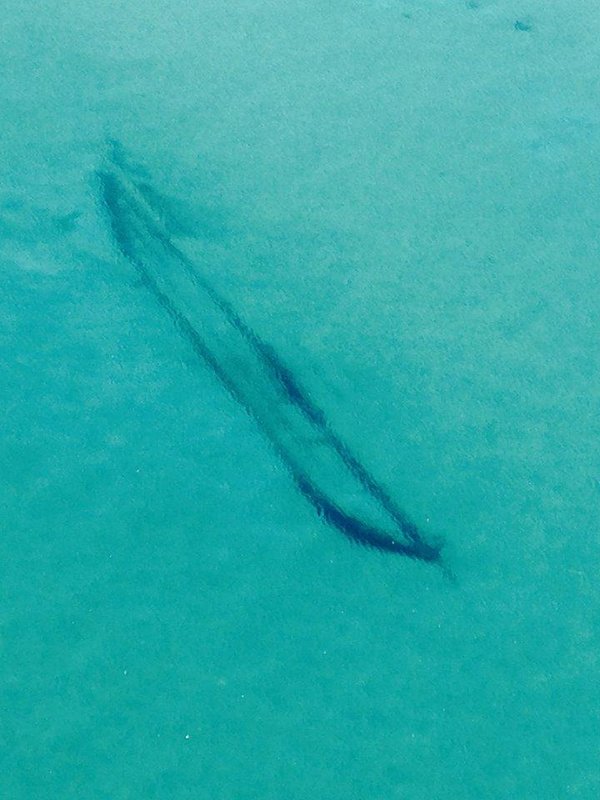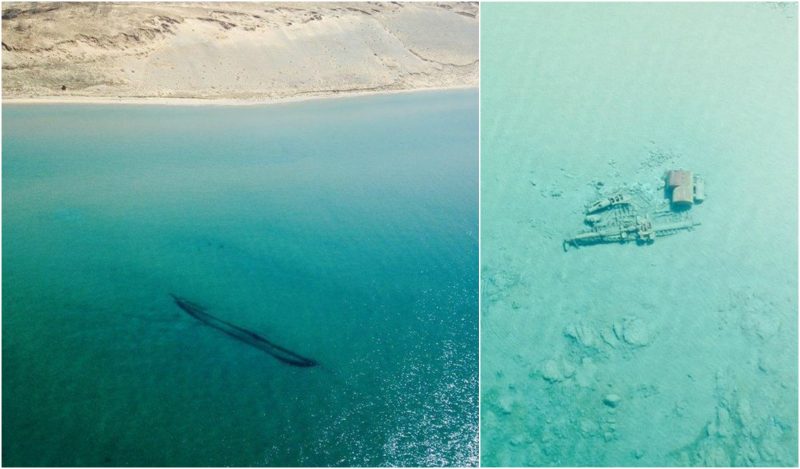Lake Michigan hides many secrets in its depths, including old, sunken shipwrecks that have been there for decades. Just recently, the United States Coast Guard spotted several wrecks in the lake’s shallow waters. They are only visible after the ice melts during the spring and the water in the lake becomes exceptionally clear. People who wish to see the beautiful crystal, clear water for themselves have to be there at the perfect time – right after the ice melts and right before the summer causes sediment swirls and algae blooms.
Even though this past winter was considered one of the hottest on records, it was still cold enough on the East Coast to send sheets of ice across the Great Lakes. That means that people who want to get a look have to be on a plane in order to see the ships in their entirety.
The United States Coast Guard Air Station located in Traverse City had noted the crystal clear water conditions and the shipwrecks during their routine patrol. The pilots ended up taking many photos of the views .

There was one particular area near Sleeping Bear Point that is known as the Manitou Passage Underwater Preserve. It is one of the richest areas in Michigan for avid shipwreck divers. That particular area was the lumber industry’s shipping route. The North and South Manitou Islands provided a sheltered area for the ships to hide from the storms.
Not a whole lot is known about the wrecks, except for one that can be seen from the air. It is the James McBride and it is believed to be the first ship to carry cargo from the Atlantic Ocean to Lake Michigan in 1848.

The photos that were posted on Facebook were identified by some of the viewers, however, the identity of a majority of those ships still remains a mystery. The Coast Guard helped out by looking through information on the internet, but out of the five photos they posted, only two were identified.
One reporter, Bill Chappell, said that many people know that the wrecks are sometimes visible from the air. However, Lieutenant Commander Charlie Wilson said that it was uncanny just how many he and the other pilot saw while doing their weekly air run; there were so many it was impossible to count. He estimated that there had to have been about 6,000 vessels lost in the Great Lakes; approximately 1,500 ships in Michigan waters alone.
Some of the known vessels in the waters include the Francisco Morazan, which was an ocean freighter that was driven aground during a snowstorm on November 29, 1960. The Morazan sank right on top of the remains of the Walter L. Frost, which was a wooden steamer that was lost on November 4, 1903. Both wrecks sunk in shallow water just a few hundred yards from the shore.
Like the other Great Lakes, Lake Michigan is filled by algae blooms that are caused by agricultural runoff. The warmer temperatures encourage the blooms, which then obscure the wreckage during the summer. That is why right after the clear ice melts it is possible to see the wrecks.

James McBride
This ship lies only about 5 to 15-feet deep in the shallow waters. In 1848, the ship set sail on the Atlantic Ocean to pick up a cargo of salt at Turk Island. On its return, it stopped in Nova Scotia, Canada and added codfish to its cargo. It delivered the cargo in Chicago on December 4, 1848. The ship ran aground when it was making its way back home from Chicago on October 19, 1857 after delivering wood.
It’s truly amazing to realize that the water is lake water; it looks like the crystal blue waters of an area of tropical ocean.
